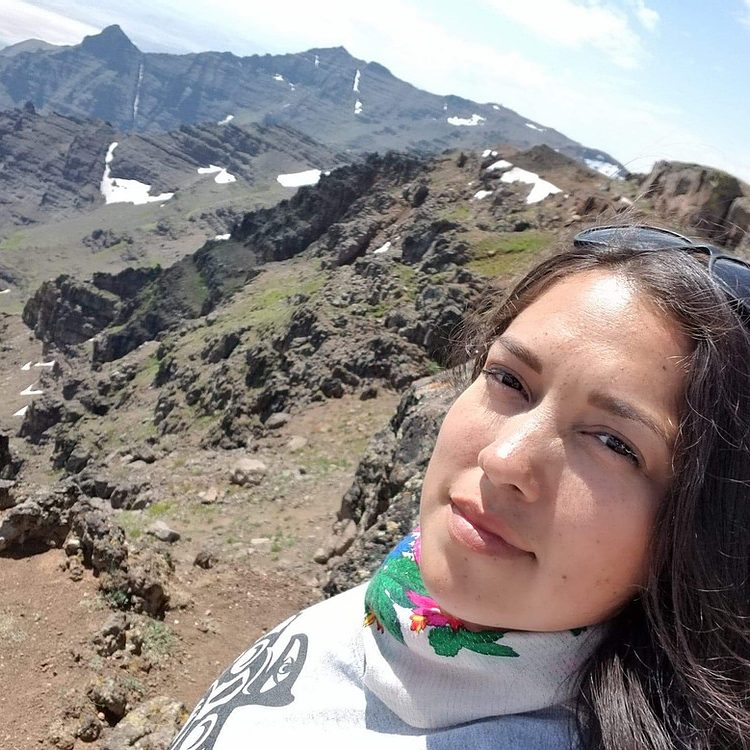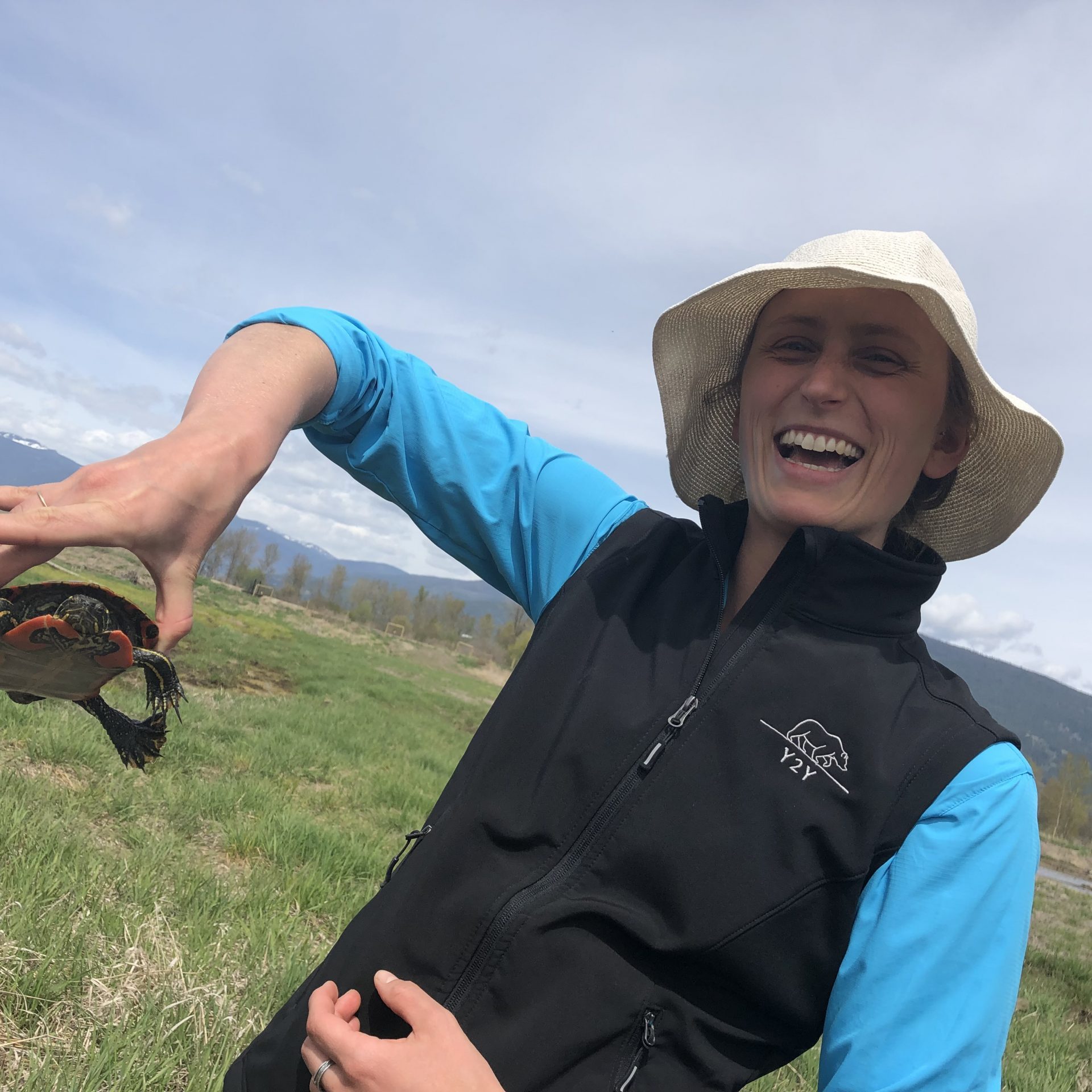Cultural survival for Native Americans is inseparable from healthy ecosystems, abundant fish and wildlife, water quality, and biodiversity. The Nez Perce Tribe manages from ridgetop to ridgetop, from the mountains to the sea. The Tribe’s Indian Claims Commission (ICC) contains some of the largest tracts of public land and protected land in the West, is largely rural and undeveloped, contains farms and ranches that provide habitat, and is home to many wildlife species that need room to roam, and fish that need cold water.
However, increasingly severe cycles of drought, heat waves, extreme precipitation, fires, and erosion have led to massive fish kills, closed fishing seasons, tick outbreaks, and emerging diseases in wild game, and changes in wild gathered foods and medicines. These changes represent an existential threat to the spiritual life and cultural survival of the Nimiipuu, the Nez Perce people.
By the end of this century, habitats and species are expected to shift upslope and north, shrink, or disappear altogether. Precipitation is projected to change from snow to rain, snow-melt and run-off will change in volume and timing. Heat waves are expected to be longer and more extreme, and wildfires are projected to increase in severity and size. As a result, water (timing and abundance) is one of the Tribe’s greatest concerns. Culturally important wild plants (berries, roots, foods, and medicines) are already changing in quality, timing, abundance, and size, and these changes are likely to accelerate.

Current paradigms, management structures, and capacity are simply inadequate to address these issues at the scale and speed required. The only way to build capacity to address these issues rapidly is to collaborate with other stakeholders in a new way. Uniquely, this project is being led by a Tribe. The heart of this effort is to integrate the resilience of humans and wildlife, and cultural survival into landscape level conservation planning.
The initial partners in this effort are the Nez Perce Tribe, Yellowstone to Yukon, Greater Hell’s Canyon Council, Nimiipuu Protecting the Environment, and David Mildrexler with Eastern Oregon Legacy Lands loosely called the Blues to Bitterroots Coalition until further input is obtained. The initial funding to kick off this initiative is from the BIA Tribal Resilience Program. We plan to convene regional land managers, tribes, stakeholders, and citizens in a coalition to work on landscape level adaptation planning efforts that focus on connectivity for wildlife, restoring habitats that support traditionally harvested plant foods, increasing food production for local communities, and growing an ethical, inclusive, and adaptive restoration economy / a healing economy.
Our first proposed projects under this umbrella are the Seasonal Round Trail Project and the Camas to Condors Project. Please click on the links below to learn more.
Our first meeting will be virtual due to Covid – 19 and will be held on July 23, 2020. Please join us in creating abundance for all species in our shared home.
Since time immemorial, people have thrived alongside wildlife and native plants in the Greater Hells Canyon Region. The Nez Perce, or Nimiipuu, people had winter homes at low elevations and summer homes at higher elevations, connected by trails to important gathering, hunting, and fishing sites. Their yearly movement along this circuit, in intimate relationship with natural cycles of abundance, is the Seasonal Round.
The Blues to Bitterroots Coalition is working on convening partners to work on a climate adaptation framework centered on this ancient pattern of seasonal movement—a pattern still followed by traditional harvesters, many ranchers, and wildlife in our shared home.
If you are interested in learning more, please contact Stefanie Krantz or Thomas Tallbull.
The objective of this project is to develop a plan and vision for the Tribe and regional collaborators to work on landscape level planning efforts that focus on connectivity for wildlife, and on habitats that support traditionally harvested plant foods. This planning effort is a first step towards garnering support and obtaining adequate funding for restoration efforts. Our vision includes whole-landscape function (including hydrology and ecological connectivity), however initial efforts will be focused on critical linkages. These include the Nez Perce Precious Lands and its watershed, and three keystone symbolic species: camas (Camassia quamash), Coho salmon (Oncorhynchus kisutch), and California condor (Gymnogyps californianus).
These focal species honor native sovereignty and lifeways. Camas represents primary producers, gathered plants and hydrology (seasonal wetlands); condors represent a member of our community, a recycler, who has been lost from these lands, is critically endangered, and whose recovery challenges us to remove poisons from the land; and Coho, the long-distance traveler, represents healthy water, is threatened by the increasing water temperatures and extreme events, and is a member of our community who has very recently been reunited with the waters of eastern Oregon. These species are cultural keystone species that serve as umbrella representatives of the ecosystems that the Nez Perce people have depended upon since time immemorial. They also represent the ecosystem processes that allowed wild foods to be plentiful and timely to sustain humans on this landscape. Restoration work on behalf of these species will improve the overall resilience of the landscape while building on decades of NPT-led efforts to bring essential pieces and processes of the landscape–from primary producers to obligate recyclers–back together.
Tiyana Casey (Wasq’u, Yakama, Umatilla, Walla Walla, Cayuse, & Nimiipuu) bridges western science with the science of her indigenous culture to advance understanding and management of her ancestral territories for both tribal and non-tribal people. She has been responsible for the cultural transmission and education of indigenous youth from most federally recognized tribes in the Nation, with the intention of offering healing pathways to professional spaces. As a life-long advocate for tribal youth and elders, and with the support of the National Indian Education Association, she testified in front of the US Congress on behalf of health, safety, and educational rights of youth in federally-operated boarding schools. Her undergraduate education in Environmental Geology, General Science, and Indigenous Nations Studies at Portland State University complemented her student body leadership positions with the United Indigenous Students in Higher Education, American Indian Science and Engineering Society regional chapter, and as the PNW Regional Student Chapter President of the Association of Environmental and Engineering Geologists. She has been funded by the National Science Foundation in Glacial Sedimentology, Air Quality, and Tribal Climate Justice research (facilitating culturally-relevant STEM curriculum with indigenous science educators). The synthesis of her education and leadership roles with the invaluable education she has received from tribal elders, hunters, gatherers, and community members informs Tiyana’s current roles both professionally and in her community.


Jessie is a conservation practitioner whose background and education focuses on environmental science, restoration, ecology, and collaboration. She works with local partners in Montana, Idaho, Oregon, and Washington to support conservation at a scale that matters to people and nature, and to inspire others to take action and work together. Jessie lives in north Idaho with her fiancé and two dogs.
David Mildrexler is Systems Ecologist with Eastern Oregon Legacy Lands where he focuses on terrestrial systems science, global change biology, large landscape conservation, and the educational programs at Wallowology Natural History Discovery Center located in Joseph, Oregon. David is an ARCS Scholar, a Wilburforce Fellow in Conservation Science and a Visiting Scholar with the Global Development and Environmental Institute at Tufts University. He holds an M.S. in Forest Science from The University of Montana, and a PhD in Forest Ecosystems and Society from Oregon State University. A resident in Wallowa County since 2005, David has worked with several non-profits in outdoor education and ecosystem conservation in the Blue Mountains. He now lives in Enterprise with his wife Andrea and their two children.
Northwest Youth Corps is in partnership with Camas to Condors through the Tribal Stewardship Program (TSP) aims to inspire the next generation of Tribal land stewards. For the first time ever, the TSP will be a collaboration with the Camas to Condors Partnership (C2C), along with new and continued partnerships with Tribal Governments, National Parks Service, and the Oregon Natural Desert Association. C2C is a Tribal lead conservation coalition lead by Nez Perce Tribe consisting of both tribal and non-tribal organizations who are working to lead regional-scale climate adaptation which is both culturally responsible and restorative. TSP Leaders and Members complete work projects for up to 40-hours a week with the guidance and mentorship of trained conservation professionals including a cultural educator. Emphasis is placed on holistic development, on the basis that healthy land supports healthy people.